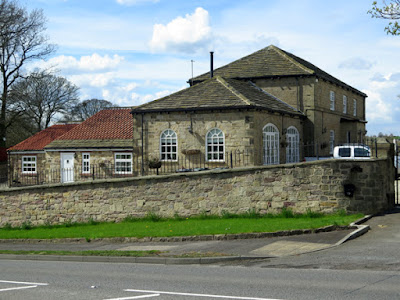 |
| A general view of the church of St. John the Baptist in Hooton Roberts |
An exploration of the geology and architecture of Hooton Roberts shows that distinctly red sandstone bedrock occurs very near to St. John the Baptist's church and that boundary walls and the walling to many of the oldest secular buildings are also built in a stone that I would describe as “Rotherham Red” sandstone.
 |
| The 15th century tower |
A quick walk around the church - set in a small churchyard with steeply falling ground marking its northern boundary - reveals that it is also mainly built out of red sandstone and some mottled yellow varieties, with buff/brown sandstone used in most of the rebuilt chancel, for restored windows and general repairs to the fabric.
 |
| A view of the chancel and a neighbouring house |
The English Heritage listing describes it as having a 12th century core, with rebuilding in the 15th century and extensive restoration during the Victorian period. Rubble masonry is visible in the north side of the nave and chancel and parts of the south aisle, but the tower and later extensions are built with much more precisely squared blocks of sandstone.
 |
| The north elevation of the nave |
On this occasion, like others that I have visited during my investigation of the building stones and construction history of mediaeval churches in and around South Yorkshire, I was unable to see the interior of St. John the Baptist's church and the remaining Norman arches, because it was locked.







